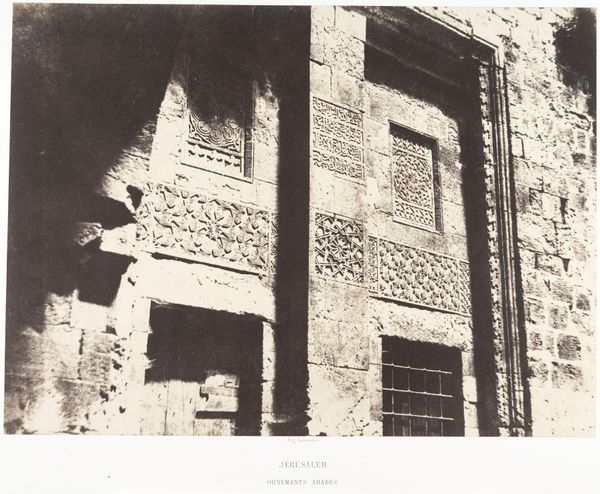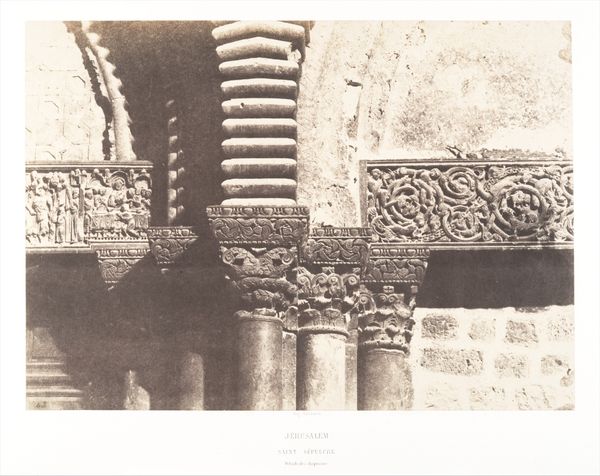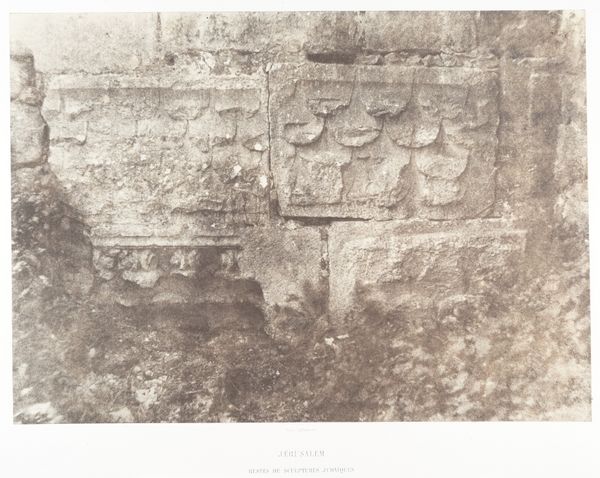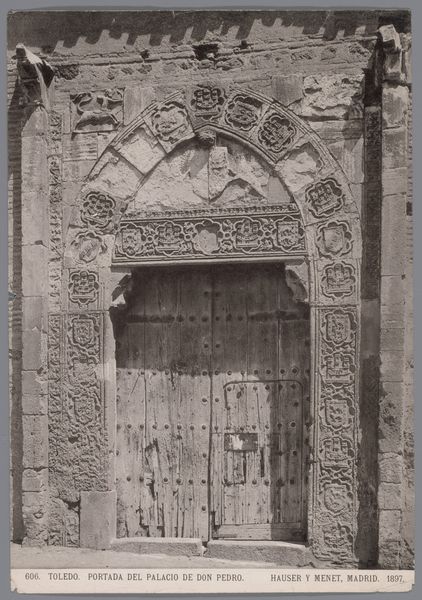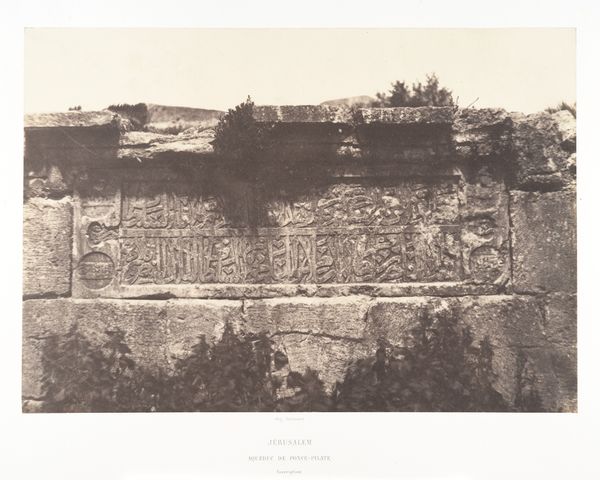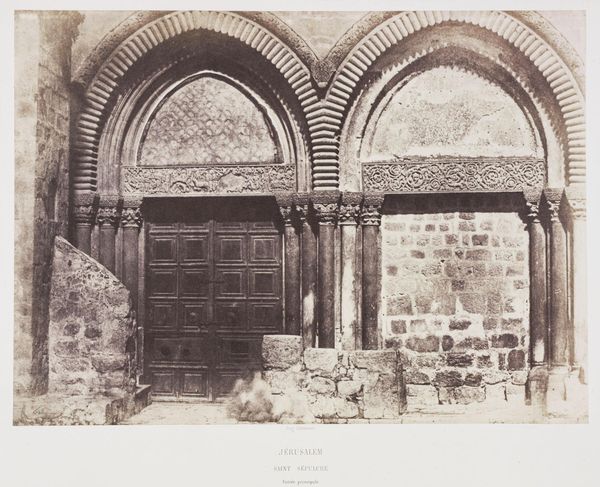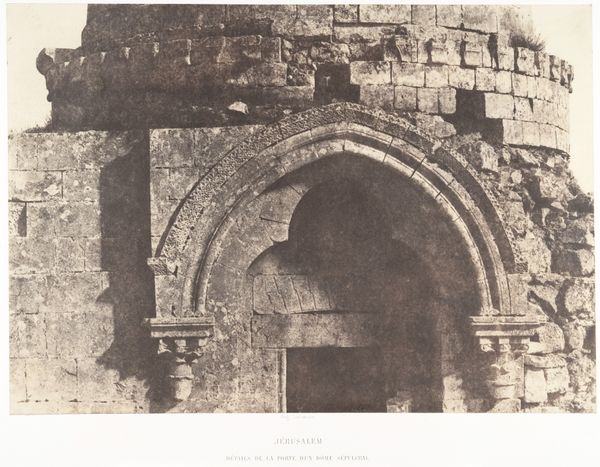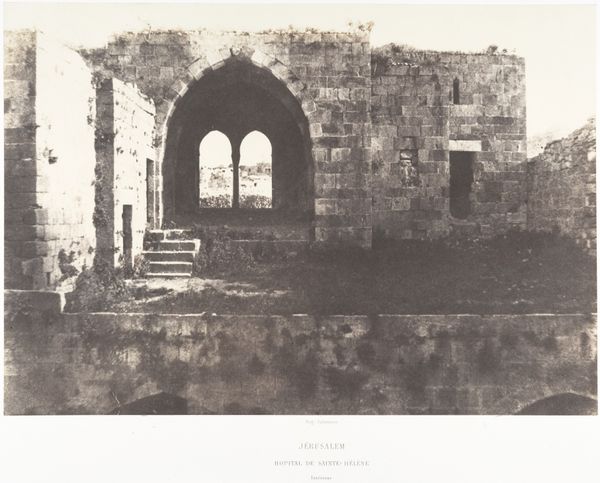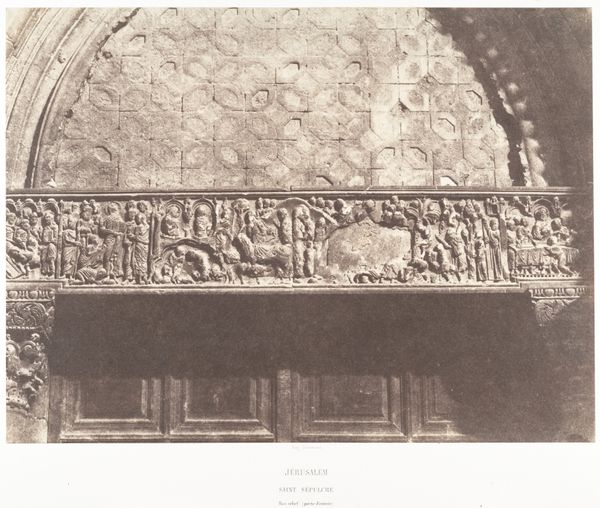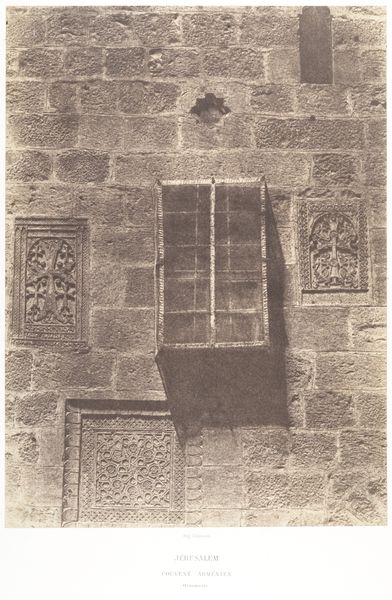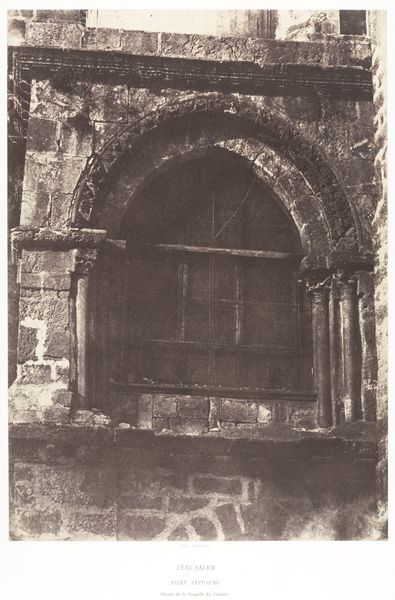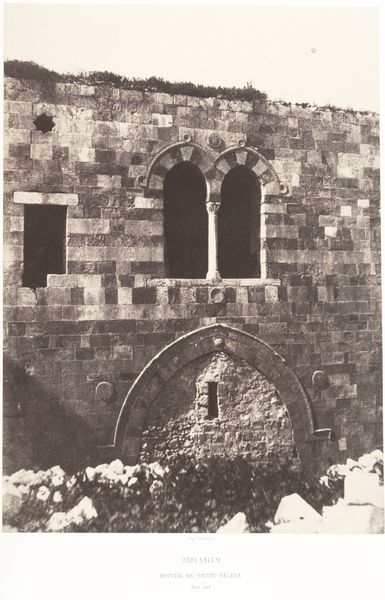
Jérusalem, Couvent Arménien, Ornements, 2 1854 - 1859
0:00
0:00
photogram, photography, architecture
#
photogram
#
photography
#
orientalism
#
architecture
Dimensions: Image: 23.1 x 33 cm (9 1/8 x 13 in.) Mount: 44.9 x 60 cm (17 11/16 x 23 5/8 in.)
Copyright: Public Domain
Auguste Salzmann made this photograph of the Armenian Convent in Jerusalem using the Calotype process. This early photographic technique involved using paper coated with silver iodide, exposed in a camera, and then developed. Salzmann's choice of the calotype, rather than a sharper alternative, lends a soft, almost ethereal quality to the image. Look closely at the stone wall: the texture is palpable, yet the details of the carvings are gently blurred. This emphasizes the weight and age of the stone, while adding a sense of timelessness. The calotype was significant because it allowed for multiple prints to be made from a single negative. This aligned photography with an emerging culture of mass production. Salzmann’s images, documenting architecture and archeology, were part of a broader project of cultural preservation, and also reflect the colonial gaze of 19th-century Europe. This photograph prompts us to consider the materials, labor, and intent behind its making, alongside the image itself.
Comments
No comments
Be the first to comment and join the conversation on the ultimate creative platform.
